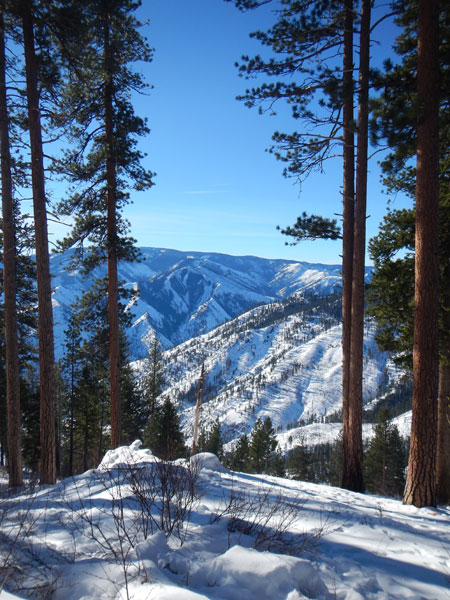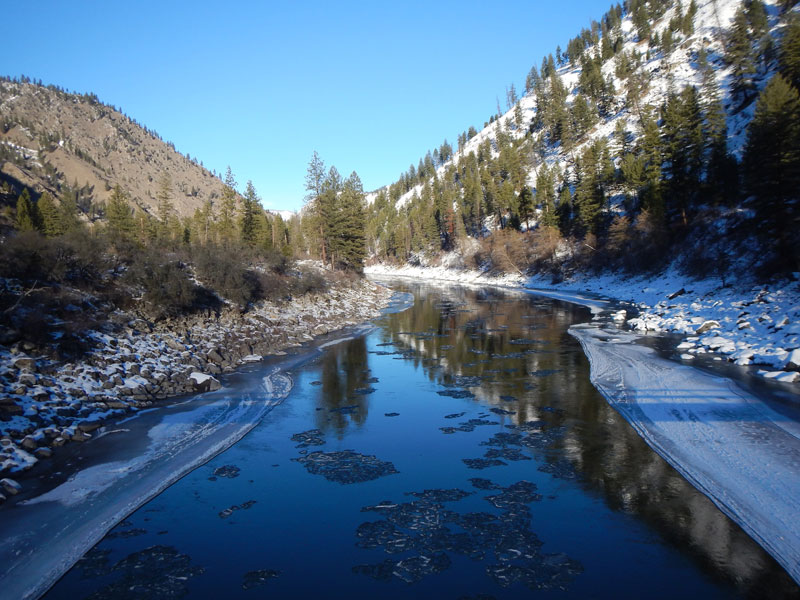by Howie Wolke
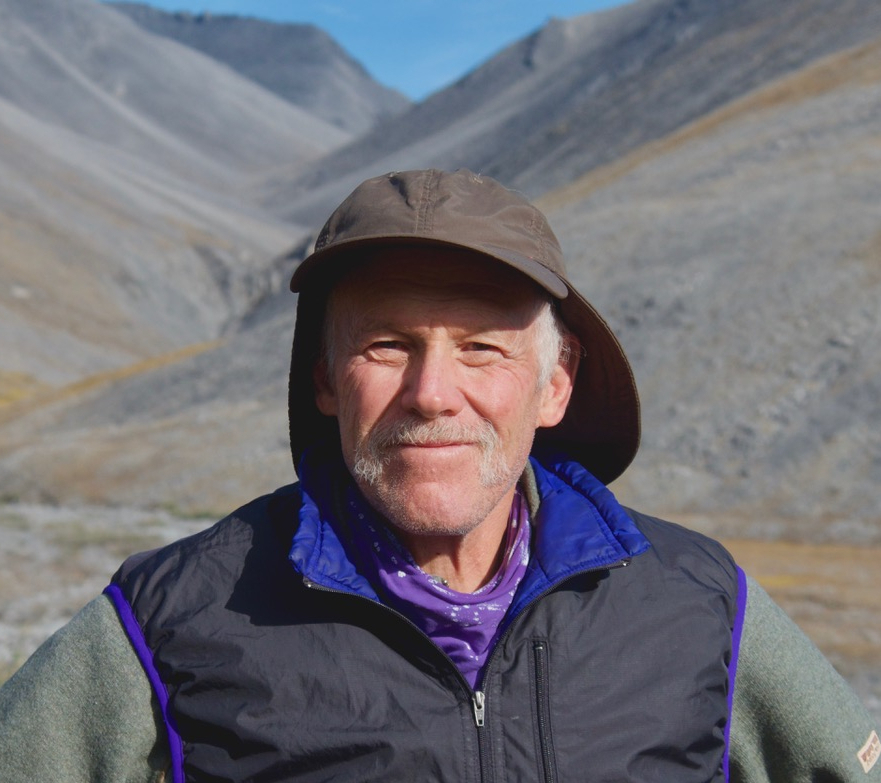
Back in the 1980’s, Dave Foreman and I compiled The Big Outside, A Descriptive Inventory of the Remaining Big Wilderness Areas of the United States (Harmony Books, 1989). The primary purpose was to accurately depict the true extent of each large roadless area in the contiguous 48 states, defining “large” as 100,000 acres or more in the West, with a 50,000 acre minimum for the East. We defined roadless areas as physical entities delineated by the location of roads and other intrusions that actually interrupt the flow of wildness.
So we mapped what was literally roadless and wild on the ground. We did not rely on agency inventories, because relying on federal agency inventories limits one to what the agencies have inventoried. Agency “roadless area” inventories are notoriously incomplete and often follow political demarcations such as state and county lines, national forest and BLM district boundaries, and isolated sections of state or private land. Moreover, agencies frequently gerrymandered “official” roadless area boundaries to exclude big chunks of wild country in order to facilitate plans for logging, mining, oil wells, off-road vehicle routes, water projects, livestock developments and so on. In other words, for a variety of reasons, many big contiguous chunks of roadless wilderness were and are divided into different administrative units, masking the true extent of the wildland.
Therefore, we hoped that by providing a comprehensive accurate inventory that clearly depicts the true extent of each big roadless area on the ground, regardless of political boundaries or considerations, conservationists would be more likely to develop and promote bigger, more holistic proposals for additions to the National Wilderness Preservation System.
Here’s an example of one inventoried big roadless area: we called it the “South Absaroka” wildland in northwest Wyoming. The Big Outside inventoried this area as the sixth largest unbroken wildland in the lower 48 states, at 2,190,000 acres. We also discovered and noted that deep within the South Absaroka was the most distant point from a road in the lower 48 states, 21 miles, just outside the southeast corner of Yellowstone. At the time of our inventory, the South Absaroka included the 704,000-acre Washakie Wilderness on the Shoshone National Forest, the 585,000-acre Teton Wilderness on the Bridger-Teton Forest, 483,000 acres of roadless backcountry in the southeastern quadrant of Yellowstone, 350,000 acres of unprotected roadless areas on both the Shoshone and Bridger-Teton National Forests, 60,000 roadless acres on the Wind River Indian Reservation, and about 10,000 acres of undeveloped state and private lands that abut national forest boundaries.
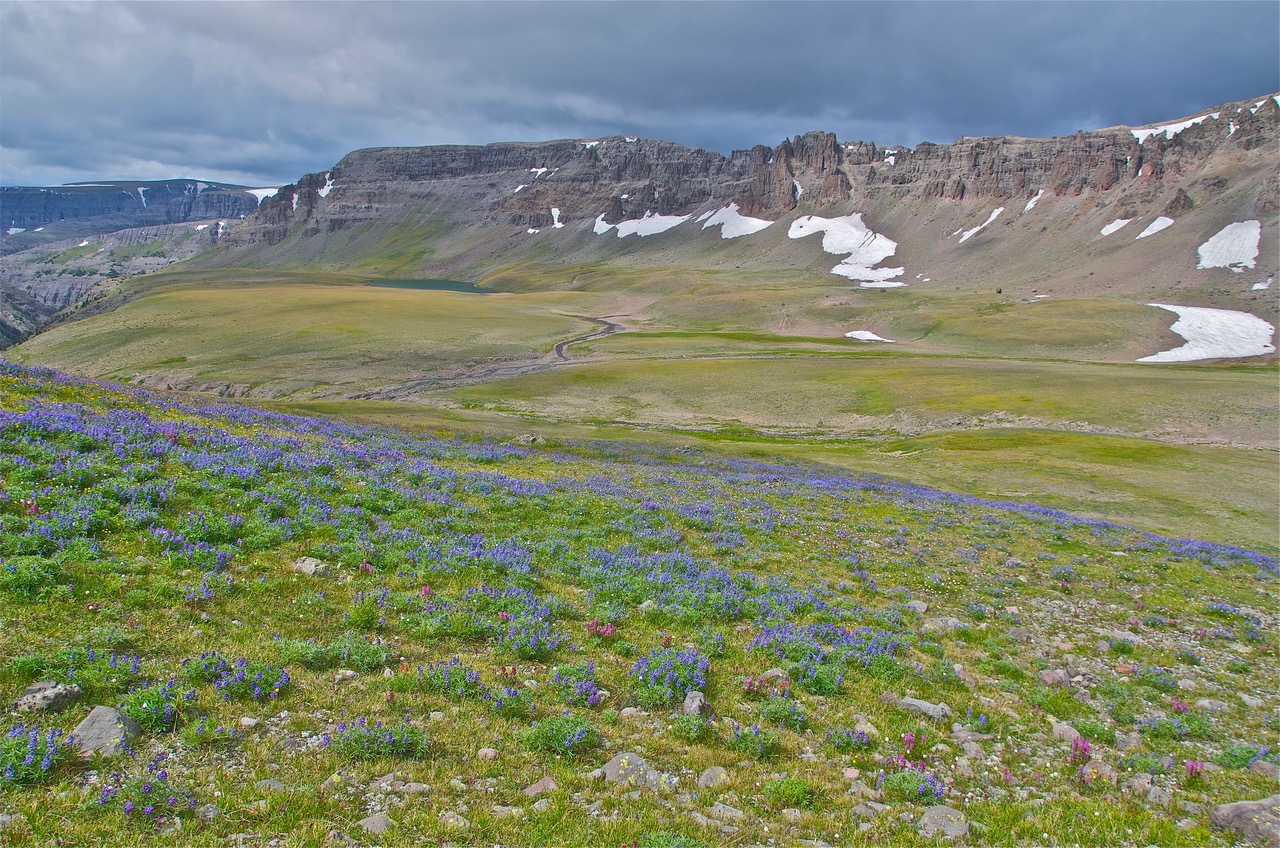
But because the South Absaroka is thus subdivided on paper into various named and un-named units, the true size and value of the area is obscured. To recognize the South Absaroka in the holistic sense is to recognize a 2,190,000-acre unbroken wildland, not just its various parts. Thus, the 350,000 acres of unprotected national forest roadless areas assume even greater importance than they would were they to stand alone. Same goes for the 483,000 acres of unprotected Yellowstone backcountry. That’s because the ecological value of wilderness increases with size. When it comes to wilderness, size matters. There are many reasons why.
For one thing, big chunks of wild country retain species and subspecies (biodiversity) better than small wildlands. Connectivity also increases the effective size of a wildland. Small isolated habitats lose species due to inbreeding depression and genetic drift in small isolated populations. Also, small isolated habitats and populations are vulnerable to demographic and environmental upheavals. The rate of species loss in small isolate (“island”) habitats can actually be calculated, as has been shown by E.O. Wilson and other ecologists. Many species simply won’t or can’t successfully cross roads, fences, reservoirs, off-road vehicle routes, power corridors, subdivisions, clear-cuts, oil fields, border walls and other developments that effectively create habitat islands of isolated populations. Habitat fragmentation is the enemy of biodiversity, and is rampant on our public lands. For example, the U.S. Forest Service has built a 400,000 mile-plus road network crisscrossing the public forests, not including state, county and other federal rights of way! You might say that the Forest Service and the BLM are primarily in the habitat fragmentation business, though they euphemistically call it “multiple use”.
Big protected Wilderness is a hedge against habitat fragmentation. Big wilderness also protects wilderness-dependent species such as grizzly, lynx and wolverine. It is well documented that large carnivores need big chunks of habitat because their populations are necessarily thinly spread over the landscape. Big carnivores are often “keystone species”, crucial to healthy ecosystem function.
For example, in the eastern U.S. the lack of large carnivores and the resulting explosion of whitetail deer in fragmented forests has damaged the eastern deciduous forest biome’s vegetation. Also, the recent resurgence of quaking aspen in the Greater Yellowstone Ecosystem is partly a result of large carnivore recovery, mainly wolves, grizzlies and mountain lions – but the recovery is now jeopardized by various state plans to dramatically reduce wolf populations. Before wolf reintroduction, there were way too many elk browsing aspen seedlings and saplings (increased wildfire, beginning in 1988, has also stimulated quaking aspen growth). With the comeback of wolves and other big carnivores, elk numbers are down and aspens are coming back. So are willows, mostly for the same reasons. With more aspen and willow, beaver populations have increased, creating wetland habitats for various species of birds and other animals.
Big wilderness protects a greater variety of habitats than do small protected units, and greater habitat variety equals greater biodiversity. In addition, by protecting habitats along both elevational and latitudinal gradients, big wilds provide room for species to migrate in response to climate change. Big wilderness is a hedge against exotic weed infestations, which tend to explode in heavily managed roaded multiple use landscapes. Small isolated wildlands are often similarly infested, because of their proximity to roaded areas.
Big wilderness protects seasonal migratory routes better than small fragmented areas.
Big wilderness is also, obviously, our best opportunity for real solitude, an increasingly endangered value in this over-crowded world. Because deep backcountry is less crowded than areas easily accessible by road, resource damage is minimized. So there’s less need for agencies to regulate user numbers or to otherwise impose regulations. Fewer regulations means more freedom, another increasingly rare wilderness value.
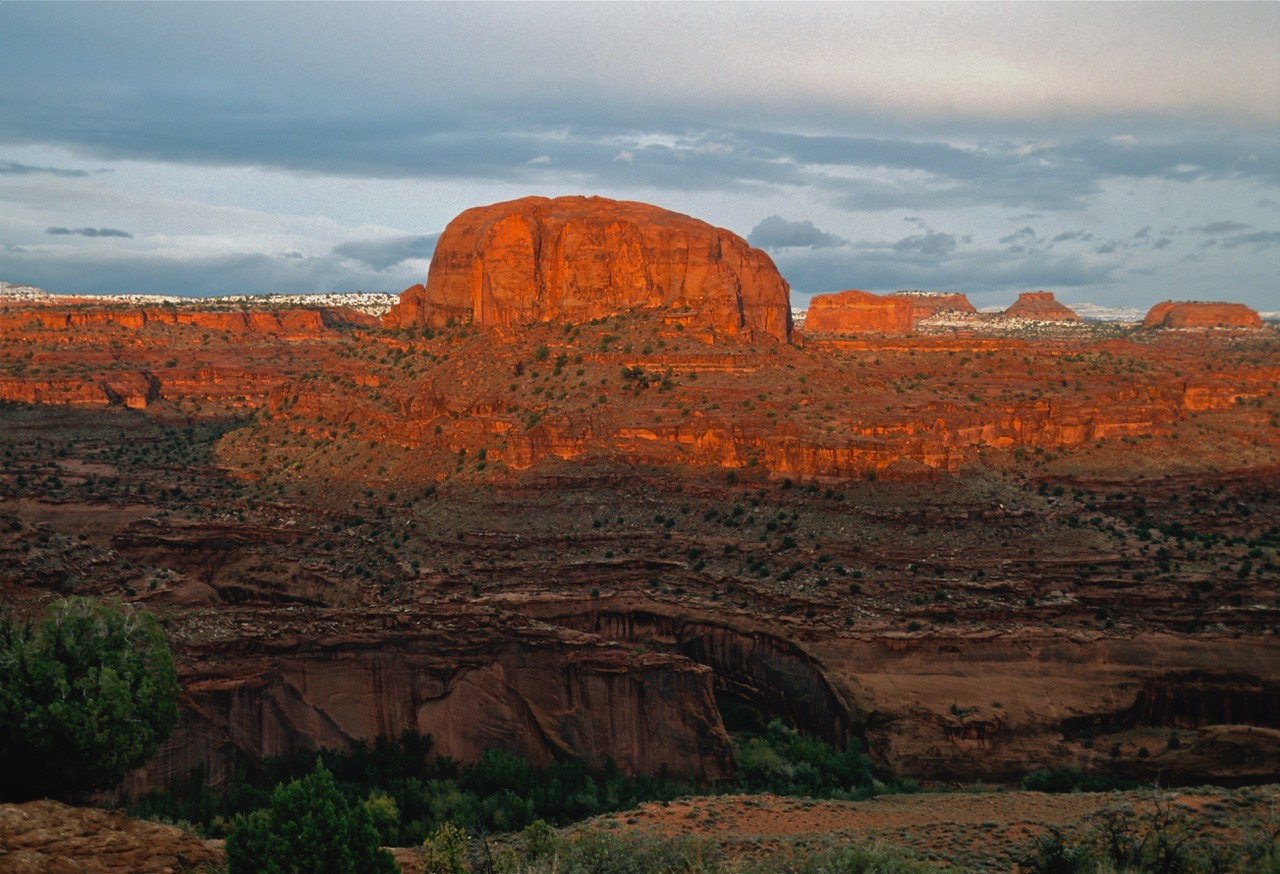
Size facilitates good wilderness stewardship in other ways, too. Big wilderness is self-protecting, its core protected from human malfeasance by its remoteness. The armies of logging, mining, poaching, littering, off-road vehicle abuse, livestock trespass, arson and even illegal agency construction projects all are facilitated by roads. The insatiable agency compulsion to manipulate vegetation – especially in the Forest Service and BLM -- is also facilitated by proximity to roads. In big wilderness, illegal attempts to manipulate, tame, poison, construct, modify, and bulldoze are countered by the simple impracticality of implementing such mischief many miles from the nearest road. In other words, bigness increases the core to edge ratio of a wildland, and the edges, along and near roads, are where most human-induced mischief occurs.
Of course, size is self-protecting only when Congress doesn’t legislate special provisions that allow for destructive activities otherwise prohibited in wilderness. The biggest designated wilderness in the lower 48 states, the Frank Church River of No Return in central Idaho, includes a hodgepodge of legislatively grandfathered airstrips, jetboats, and private structures. Not to mention severe abuses by river and horse outfitters, to which the Forest Service invariably turns a blind eye.
Wildland Edge Effect is not just an inherent problem with small areas, but the shape of a wildland also has ecological ramifications. Excluding corridors from wilderness proposals for off-road vehicle use – including mountain bikes -- and excluding big chunks of wild country in order to mollify special interests such as loggers, oil drillers or ranchers results in wilderness boundaries that are irregularly shaped, like an amoeba, with low core to edge ratios. “Cherry stem” exclusions that dead-end deep within surrounding wilderness lands likewise produce more edge. Again, when remoteness is lacking, ecosystem integrity declines.
Here’s another huge reason for big wilderness: it allows for natural landscape processes. Natural predator/prey relationships, especially those that entail large carnivores are an obvious example (see above). And similar to predation, natural disturbance regimes such as wildfire, flood, blowdown and native insect outbreaks fuel the fires of evolution by weeding out those that are unfit to survive. The Wilderness Act defines wilderness in part as “untrammeled”, meaning uncontrolled or unregulated. Wild, not tamed. Most of these processes require big wilderness. For example, large carnivores simply can’t survive in tiny wilds. And it is difficult to allow natural wildfire to thrive in small wildlands adjacent to homes, towns, commercial logging areas and other facets of civilization.
When we researched The Big Outside, Dave and I were excited to discover that many chunks of roadless wildernesses were actually much larger than advertised. We had hoped that by inventorying the actual wildland entity as it existed on the ground, our project would inspire conservation groups to propose wildernesses designations that reflected the full wildland entity – or to at least begin a campaign from a stronger, less compromised position. We also suggested in numerous situations areas where roads could be closed, reclaimed and included in designated wilderness in order to create more holistic boundaries with less edge. But apparently, few of our conservation colleagues paid attention.
And therein lies the crux of the matter. Three decades later, too many conservation groups still begin the political process with parred down compromised wilderness proposals that are destined to grow even smaller as the political system inevitably slices and dices away at ecological wholeness. And unfortunately, the “big greens” such as The Wilderness Society (TWS) and some of their regional satellites – the Greater Yellowstone Coalition and the Montana Wilderness Association, for example – are leading the charge toward small edge-dominated “wilderness”.
In a nutshell, the template is this: Collaborate with local wilderness opponents and eliminate from the “wilderness” proposal most or all of the controversial areas so that mountain bikers, snowmobilers, loggers, oil drillers, ranchers and other wilderness opponents are mollified. Then take your emaciated proposal to the appropriate agency and to Congress. I actually watched one employee of The Wilderness Society give a seminar in which he proudly described the exact process that I just outlined.
Earlier, I mentioned special provisions that mar the Frank Church River of No Return Wilderness. Various special provisions are often added to these weak “wilderness” bills to further appease opponents. Special provisions undercut both the letter and the spirit of the Wilderness Act by allowing activities in wilderness that are otherwise prohibited. In addition to airstrips and motorboats, special grazing privileges, water projects, ATV use for ranchers and other affronts to wilderness are often added to bills to make the so-called “wilderness” legislation even more palatable to otherwise anti-wilderness interests. Some wilderness bills even have special provisions to control natural wildfire, including fuel-breaks and logging in the name of “fuel reduction”. Special provisions for wildlife management include “guzzlers” to artificially inflate game numbers in arid landscapes, and provisions for implementing predator control. Remember, wilderness is supposed to be “untrammeled”, which means wild and unmanipulated by human whims.
With all of these enervated “wilderness” proposals, Marshall, Leopold, Murie, Zahniser, Brandborg and other wilderness visionaries spin in their graves. So does old Cactus Ed.
There are many examples of wilderness designations that facilitate habitat fragmentation, edge effect and mechanized recreation at the expense of ecosystem integrity. The former 545,000 acre (inventoried roadless acreage from The Big Outside) Boulder-White Clouds Roadless Area in south-central Idaho is one example. It was first whittled down and then sliced into two separate “wilderness” units by Congress, in order to create a non-wilderness mountain bike and motorcycle corridor. This dramatically decreased the core to edge ratio, slicing a big chunk of unbroken wild country in two.
In my home neck of the woods, the 575,000-acre Gallatin Range roadless area in northwest Wyoming and southern Montana includes 325,000 unbroken roadless acres in the northwest corner of Yellowstone National Park plus 250,000 acres of contiguous wilds to the north on the Custer-Gallatin National Forest. The Gallatins are an unbroken roadless wildland extending from West Yellowstone nearly to Bozeman, encompassing some of the richest mountain wildlife habitats in North America.

The so-called “Gallatin Forest Partnership” (GFP) was an ill-advised collaboration with wilderness opponents that intentionally excluded all of the less compromising conservation groups. The Wilderness Society, the Greater Yellowstone Coalition and the Montana Wilderness Association (now called “Wild Montana” without the word “wilderness” in its name) were the three main “conservation groups” responsible for this debacle. After most of the popular snow-machine and mountain biking areas were cut, GFP proposed 100,000 acres of mostly high altitude “wilderness on the rocks” out of 250,000 roadless acres in the Gallatins north of Yellowstone. Sadly, the best wildlife habitats in the Gallatins – especially the Porcupine and Buffalo Horn drainages – were excluded from wilderness consideration. Porcupine and Buffalo Horn, by the way, also form the crucial wildlife link between Yellowstone and the northern Gallatins and wildlands further to the north. Fortunately, Congress has not yet acted on the GFP plan.
Of course, these public lands are a legacy for all Americans, not just local “stakeholders”. That is another basic problem with all of the locally-based special interest “collaborations”. Most of the American public is excluded from the decision-making.
In my opinion, many of the larger conservation groups have lost their way, populated nowadays by careerists for whom wilderness is just one of many worthy causes on a varied career track. They view wilderness as one of many land use options rather than the fundamental basis for life on Earth, for 3.5 billion years of organic evolution. Political expediency prevails. The mentality is to pass truncated “wilderness” bills at all cost, nearly always through collaboration with traditional opponents. Avoid enmity and discord. And let’s face it. The big foundations, such as Pew, for example, expect collaboration and compromise. Follow the money and forget about biodiversity, wildlife and the value of big uncompromised holistic wilderness.
Nonetheless, I am aware that we live in a world where little gets done without some level of compromise. Yet wilderness and related natural landscape protections stand alone, different from other social and environmental issues in a couple of important ways. Wilderness represents the antitheses of civilization’s unrelenting quest to tame, dam, pave, graze, cultivate, control and mold the world into and unnatural quagmire for human convenience. And once wilderness is defaced, it is usually gone for good. In the contiguous United States, about 90% of the wilderness has already been compromised away. Can’t we save the remaining 10% of the landscape? To resist further compromise isn’t “radical”. It’s common sense. It should behoove the conservation movement to do everything within its power to resist further compromise of wildlands. And let’s also restore key wildlands that have been degraded. E.O. Wilson suggests that 50% of the Earth’s landscapes should be protected as nature reserves. Clearly, we have a long ways to go.
By contrast, the old fashioned way requires a long-term commitment to educating and organizing, so that the general public learns that wilderness is far more than a primitive recreation area, not just a pie to be chomped down and divvied up among user groups. It also requires the strength of character to avoid beginning a process by compromising with opponents, and by fighting for every possible acre thereafter as the process proceeds. This requires leadership that loves and values wilderness as the highest expression of human selflessness: as a biocentric entity with intrinsic value just because it exists as a wild place. That mentality is often lacking in today’s conservation movement.
I am aware of today’s considerable social and political barriers to enacting clean wilderness bills (those with no special provisions) that include most or all of the available wildland entity. They are formidable. I get that. I realize that todays’ public land debate is a complex beast in an increasingly complex world. For example, mountain bikes didn’t even exist prior to the 1980’s. But now, mountain bikers (mostly young, physically fit socially liberal outdoor enthusiasts) are a major anti-wilderness lobby. And because today’s snow-machines can tackle much tougher terrain compared with those of the past, snowmobiler opposition to wilderness designations has grown accordingly.
So, in today’s global social and environmental shitstorm of climate crisis, overpopulation and the biological meltdown (the ongoing human-caused extinction event) – not to mention wars, racism and the demise of democracies – it is not surprising that wilderness flies below the radar of many activists. And when you fail to recognize the importance of something, it is easy to compromise it away.
But still. Still thriving deep in my cranium’s long term memory synapsis I can recall a better way. I recall when folks like Bob Anderson and Randall Gloege and their Senate champion Lee Metcalf (D-MT) simply wouldn’t accept a divided Absaroka-Beartooth wilderness. Today, the greater Absaroka-Beartooth wildland is a 1,249,000-acre unbroken expanse of wild country (acreage from The Big Outside), dominated by the officially protected 944,000-acre Absaroka-Beartooth Wilderness.
The battle to enact the 1964 Wilderness Act itself was before my time, but Howard Zahniser and crew didn’t get LBJ’s signature on the bill by being meek and making it palatable to every self interest group. Yes, there were unfortunate political compromises along the way – for example, to accommodate mining claims through 1984 and to grandfather in livestock grazing -- but our side fought to minimize these special provisions. I cannot help thinking that given today’s mindset, were the Wilderness Act on the 2021 political docket, the National Wilderness Preservation System would more resemble Disneyland than real wilderness.
Political victories don’t emerge from the woodwork; nor from wishful thinking. They require a full-time commitment to public education and grassroots organizing. As long-time activist Brock Evans put it, they require “endless pressure endlessly applied”. Congressional wilderness champions such as Lee Metcalf were possible only because Congress perceived that voters wanted big wilderness. I am not naive enough to believe that there is any kind of quick fix for the conservation movement in these complex and frightening times. I fully realize that it may be too late in the climate game to save much of anything. Yet the Thirty by Thirty and Half Earth movements provide a ray of hope. Birth rates in many parts of the world are declining (though not enough). And if we don’t try, we guarantee failure. Designating big holistic wilderness and keeping it wild needs to be a priority if we are to slow the biological meltdown and maintain some level of long term wildness and naturalness on this beleaguered planet.
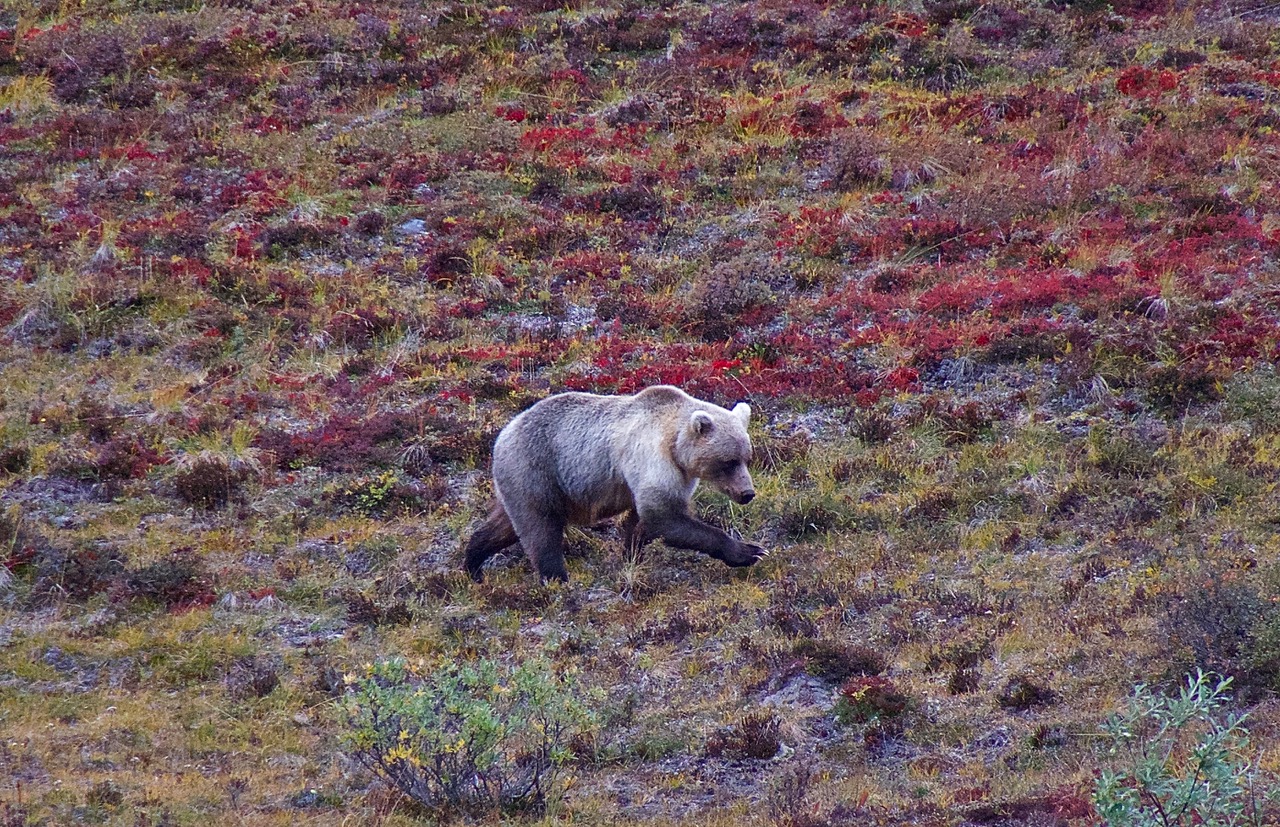
To summarize, wilderness is primarily about habitat, wildlife, biodiversity and the intrinsic value of wild landscapes. Big wilderness defines our healthiest landscapes, be they forest, desert, prairie, tundra or combinations of diverse habitats. Wilderness is also about non-mechanized recreation, yes, and related spiritual values including solitude. But recreation and solitude are not its primary purpose, and our remaining wildlands are far more than an outdoor gymnasium.
Real wilderness is the primary control area in the vast experiment called human civilization. For how else can we measure the health of civilization except to compare it with unspoiled nature? All wilderness and semi-wilderness lands have conservation value. But protected wilderness ought to be as large as possible. It should be kept wild, without human manipulation and without livestock grazing. It should be managed under the Wilderness Act without special provisions that weaken protections.
Wilderness boundaries should also reflect the actual wildland entity on the ground, rather than the artificial borders of BLM or ranger districts, county lines, state lines, and old incomplete agency roadless area inventory borders.
Where feasible, wildland units should be interconnected or proximate, without barriers to wildlife movement. And wilderness areas should have holistic boundaries that minimize edge and maximize interior remoteness. Big, wild remote holistic wilderness is the cradle of all life on Earth and needs to be treated as such. Small fragmented edge-dominated oddly-shaped wildlands are better than nothing, sure, but they don’t fully maintain the core values of wilderness that are so important on this otherwise human-dominated planet.
In a sane world, overpopulation, the climate crisis, and the ongoing biological meltdown would top most any thinking person’s political agenda. Big holistic wilderness is intricately linked to all three. If the so-called “big greens” won’t lead the charge, unapologetic and with passion, based upon good science and biophilia, then they need to get out of the way of those who will.
------------------
Howie Wolke recently retired from 41 years of outfitting and guiding wilderness backpack treks from Alaska to Mexico. He is on the Wilderness Watch board of directors and has been a wilderness advocate in the northern Rockies since 1975. He lives with his wife Marilyn Olsen and their dog Rio in southern Montana near Yellowstone National Park.
All photos © Howie Wolke. From top to bottom: Washakie Wilderness, South Absaroka Complex, WY; Escalante Canyons Proposed Wilderness, UT; Buffalo Horn Drainage, Gallatin Range Proposed Wilderness, MT; Grizzly Bear, Arctic National Wildlife Refuge Wilderness, AK.
%MCEPASTEBIN%
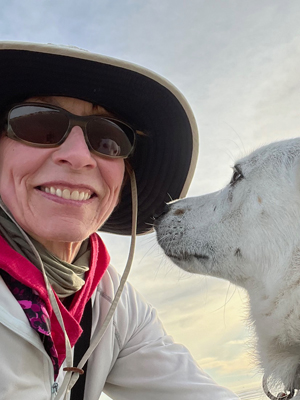



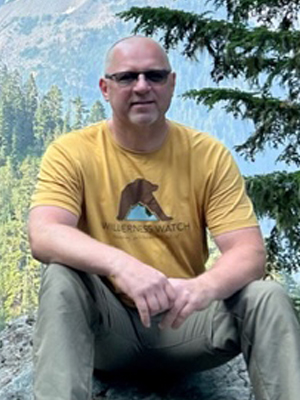
 A recent
A recent 
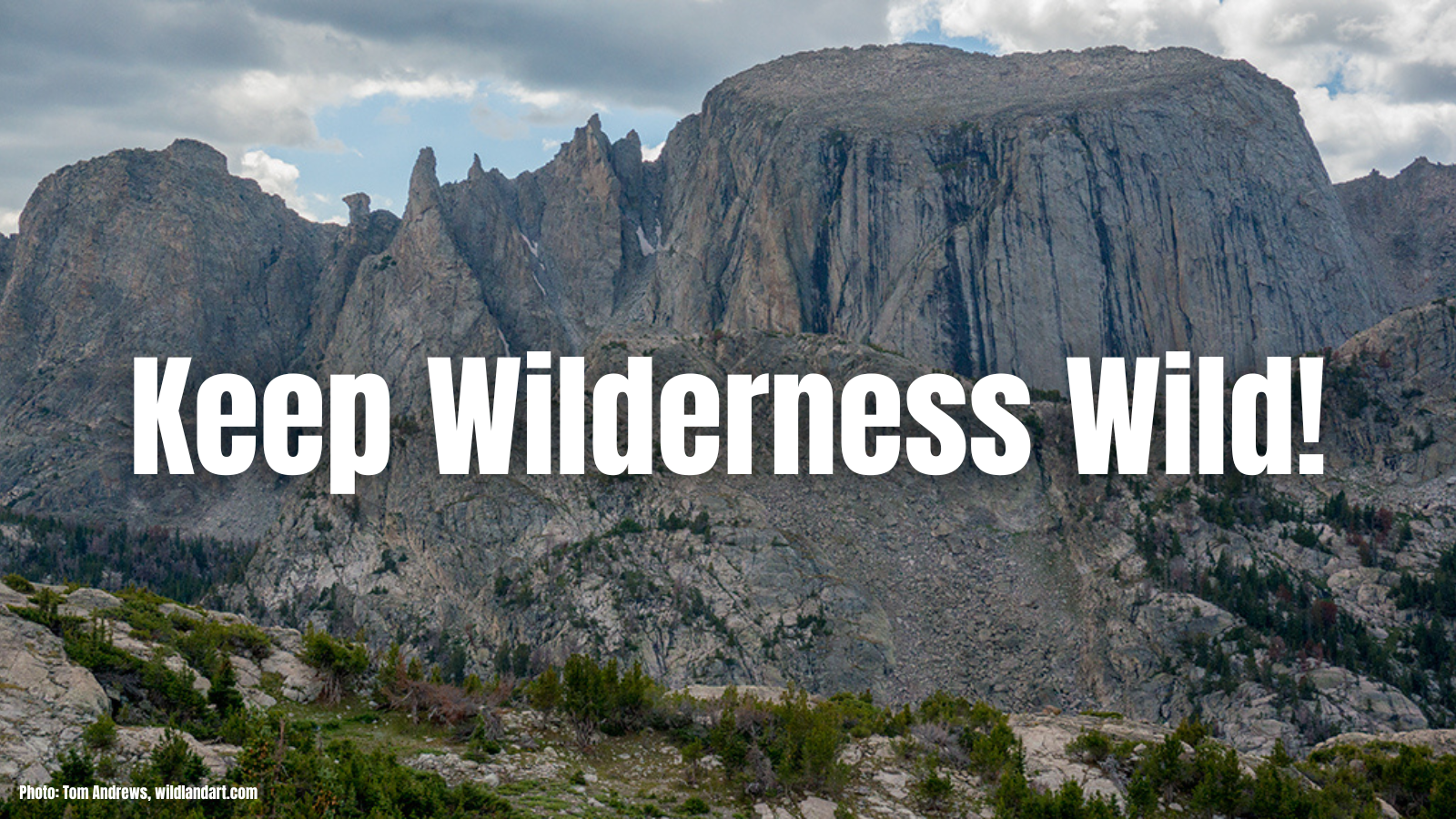

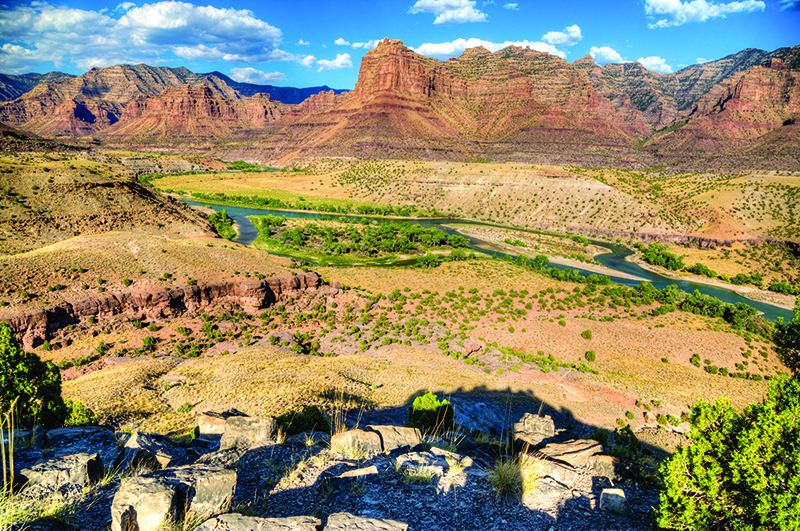
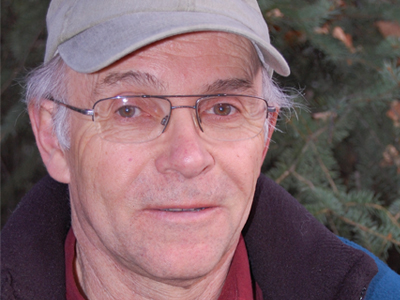




 by Roy (Monte) High
by Roy (Monte) High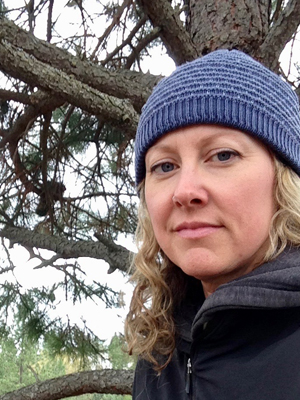
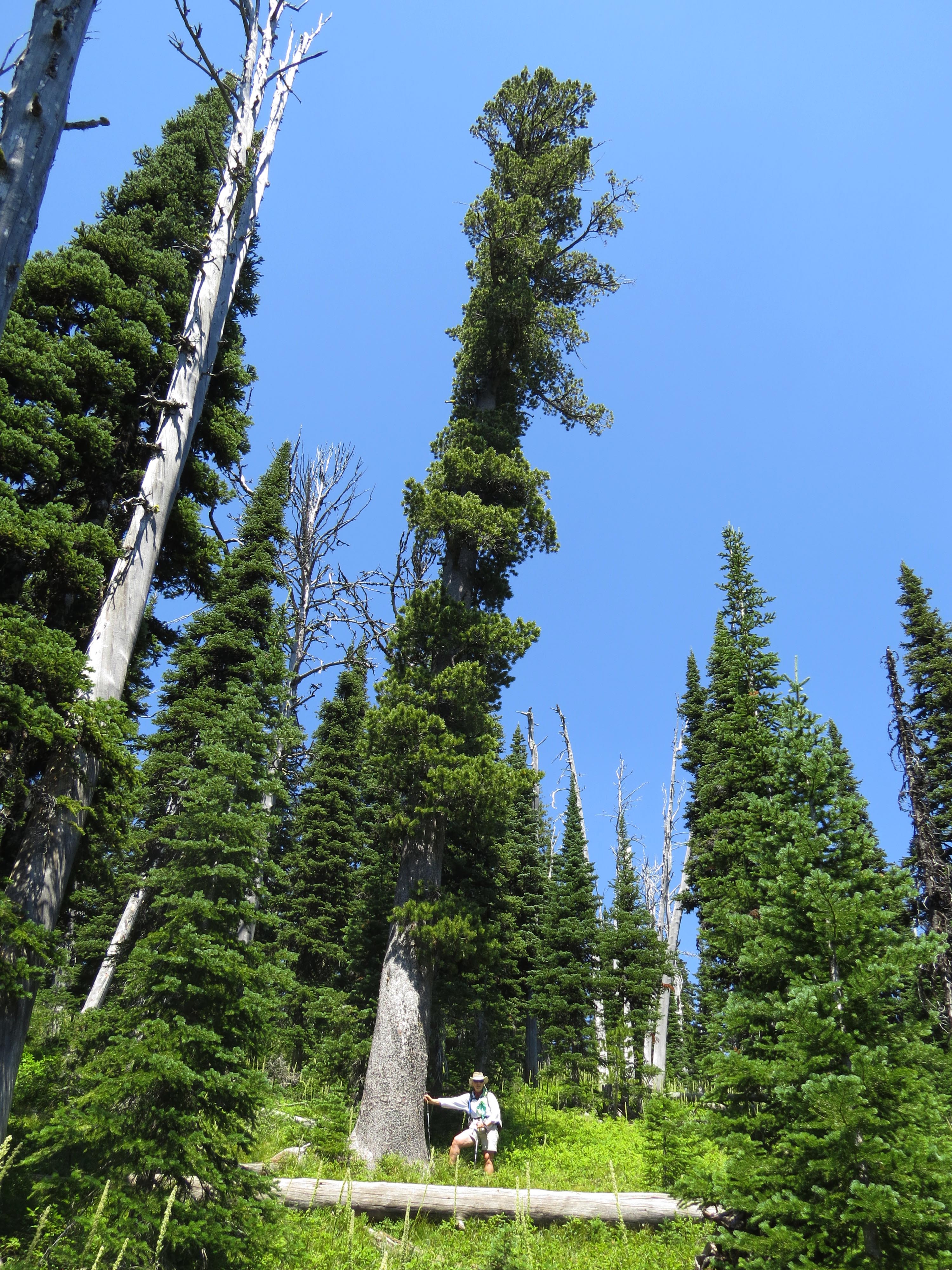

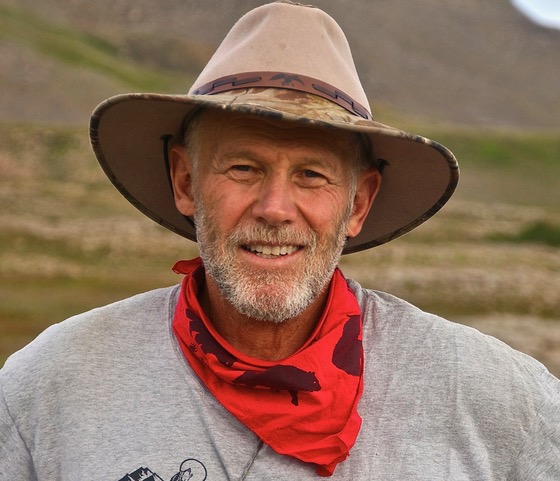
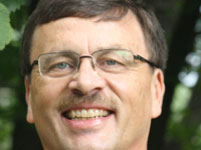 by Kevin Proescholdt
by Kevin Proescholdt
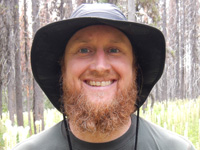 By Brett Haverstick
By Brett Haverstick